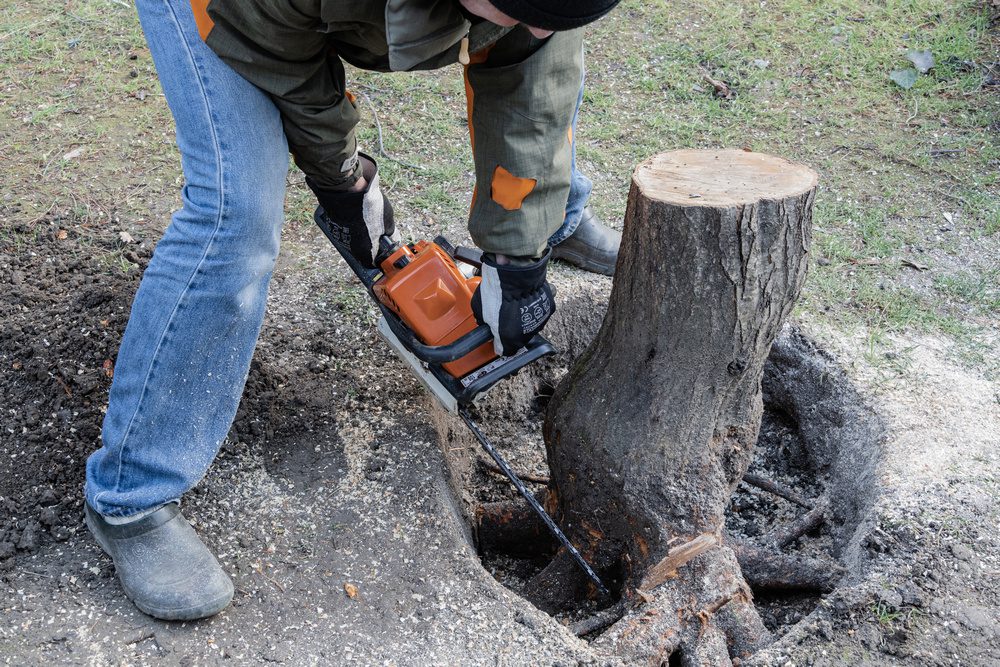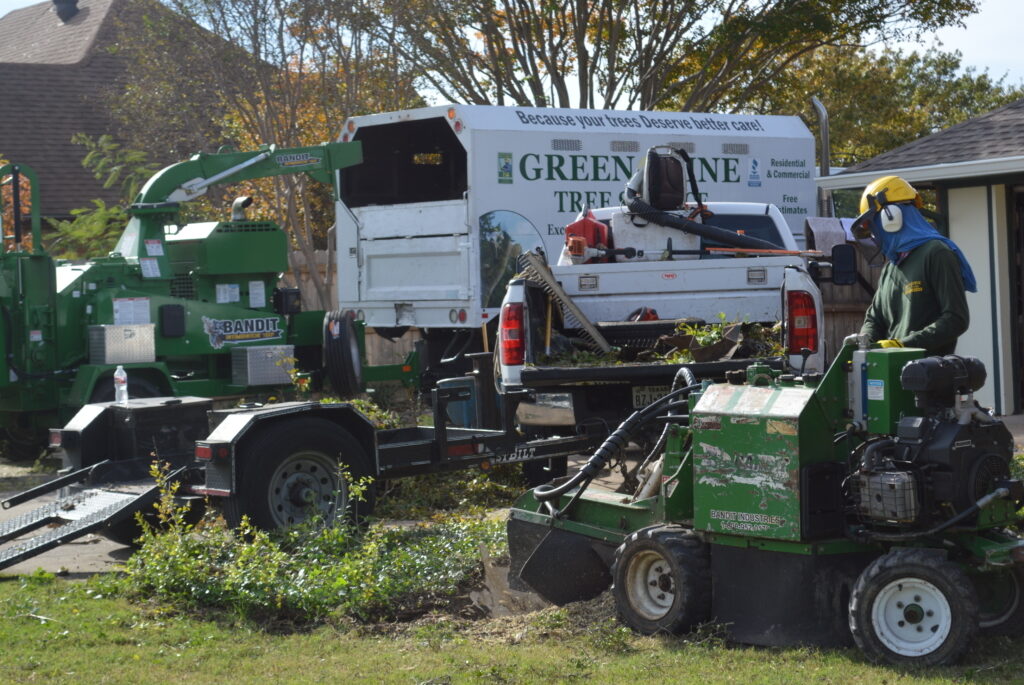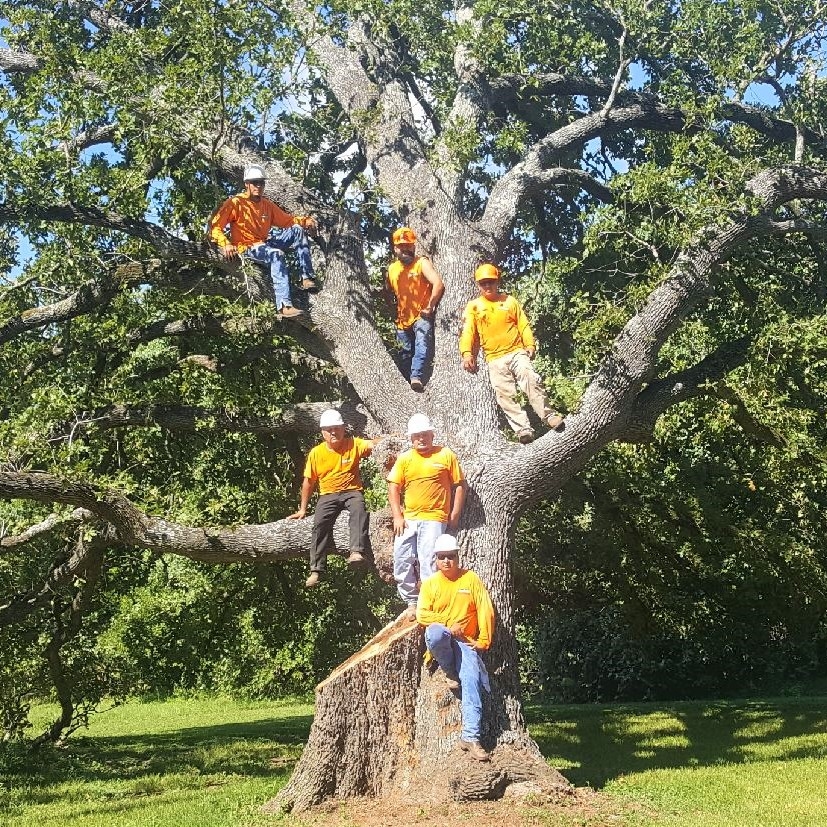Introduction
Tree stumps removal can be a real hassle to deal with, but they don’t have to be a permanent part of your yard. Whether it’s for aesthetic, safety, or practical reasons, getting rid of a stump is often the best solution. Let’s explore the best ways to tackle tree stump removal.
Why Remove a Tree Stump?
Aesthetic Reasons
A tree stump removal can make an otherwise beautiful yard look untidy. If you’re looking to enhance your outdoor space, removing that stump will instantly improve your landscape.

Safety Concerns
Stumps can be dangerous, especially in areas where kids play or people walk. Tripping over a hidden or forgotten stump is a common household accident, one that can easily be avoided by removing it.
Pest Problems
Stumps are a favorite hiding spot for all sorts of pests, including termites, ants, and beetles. Removing a stump eliminates a potential infestation before it starts.
Space for New Landscaping
If you’re dreaming of a flower bed or a new tree in that spot, the stump has to go! Freeing up that space allows you to use your yard as intended.
Tree Stump Removal Methods
Manual Removal
This method is perfect for smaller stumps. It involves digging out the stump and cutting the roots. While labor-intensive, it’s highly effective for smaller projects.
Chemical Removal
For larger stumps, chemicals can speed up the decomposition process. Potassium nitrate is commonly used, allowing the stump to break down over time.
Stump Grinding
A mechanical method that grinds the stump into chips, stump grinding is quick and efficient. You can rent the machine or hire a professional for this task.
Natural Decomposition
If you’re not in a hurry, letting nature take its course is an option. Over time, the stump will decay on its own, but you can help by adding compost or fertilizer.
Manual Tree Stump Removal
Tools Required
Shovel
Axe or Saw
Heavy-duty gloves
Chains or ropes (optional)
Step-by-Step Process
Unearth the roots by digging around the stump.
Cut the roots using an axe or saw.
Pry the stump loose using a lever or chains.
Remove the stump from the ground.
Pros and Cons
Pros: Cost-effective, no chemicals needed.
Cons: Very labor-intensive, time-consuming for large stumps.
Chemical Tree Stump Removal
Choosing the Right Chemicals
Potassium nitrate is a common choice as it accelerates decomposition without harming the soil.
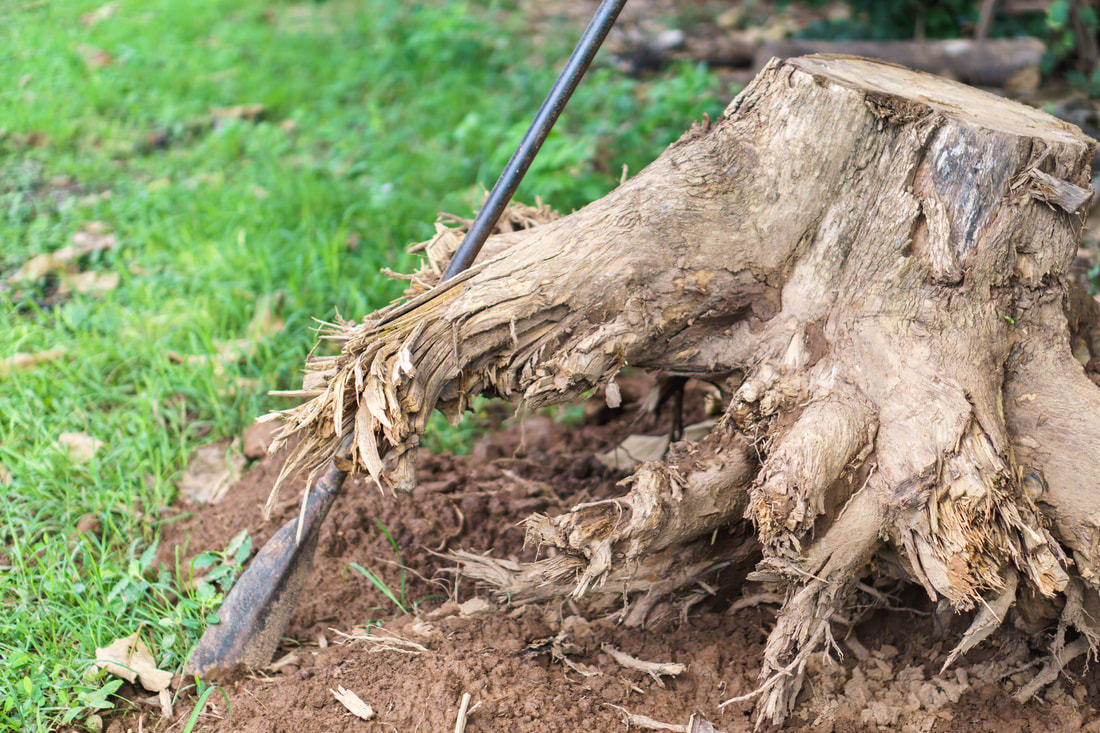
Application Process
Create deep holes in the stump by drilling through it.
Pour the chemical into the holes.
Wait for the stump to decompose, which can take several weeks to months.
Environmental Considerations
While chemical removal is effective, it’s important to choose chemicals that won’t harm nearby plants or groundwater.
Stump Grinding
What is Stump Grinding?
Stump grinding is the process of using a machine to shred the stump into small wood chips.
Renting vs. Hiring Professionals
Renting: If you’re comfortable with heavy machinery, renting a stump grinder can save you money.
Hiring: Professionals get the job done quickly, but at a higher cost.
Steps Involved
Position the grinder over the stump.
Grind the stump down to ground level.
Clear away the wood chips and debris.
Natural Decomposition
How it Works
Over time, fungi and bacteria break down the wood, returning it to the soil.
Pros and Cons
Pros: Eco-friendly, no need for equipment.
Cons: Takes a long time (months or years), might not completely remove the roots.
How to Speed Up the Process
Adding compost or nitrogen-based fertilizers can help speed up the decomposition process.
Comparing Tree Stump Removal Methods
Cost Comparison
Manual: Lowest cost, mostly tools and your labor.
Chemical: Moderate, depending on the chemical used.
Stump Grinding: Higher if hiring professionals.
Time Involvement
Manual: High (hours or days).
Chemical: Moderate (weeks to months).
Stump Grinding: Low (hours).
Effectiveness
Manual: Best for small to medium stumps.
Chemical: Good for larger stumps.
Stump Grinding: Highly effective and fast.
DIY vs. Hiring Professionals
When to DIY
For smaller stumps or if you have the necessary tools and time.
When to Hire a Professional
For large stumps, especially if they’re close to structures or utilities.
Cost Differences
DIY methods are generally cheaper but can take more time and effort.
Preventing Tree Stumps from Re-Growing
Root Systems
Stumps can sometimes sprout new growth if the roots aren’t fully dead. Eliminate as much of the root network as you can.
Applying Herbicides
Herbicides can help kill off any remaining roots and prevent regrowth.
Re-planting Considerations
If you plan to plant something new, make sure the soil is clear of old roots and debris.
Safety Tips for Tree Stump Removal
Protective Gear
Always wear gloves, goggles, and sturdy boots when removing a stump.
Avoiding Accidents
Keep children and pets away from the work area, especially when using heavy machinery or chemicals.
Safe Tool Usage
Follow all safety instructions when using tools like saws, grinders, and chemicals.
What Happens After Tree Stump Removal?
Yard Cleanup
You’ll be left with a hole where the stump used to be. Add soil or compost to fill it up.
Filling the Hole
Make sure the hole is properly packed to avoid future settling.
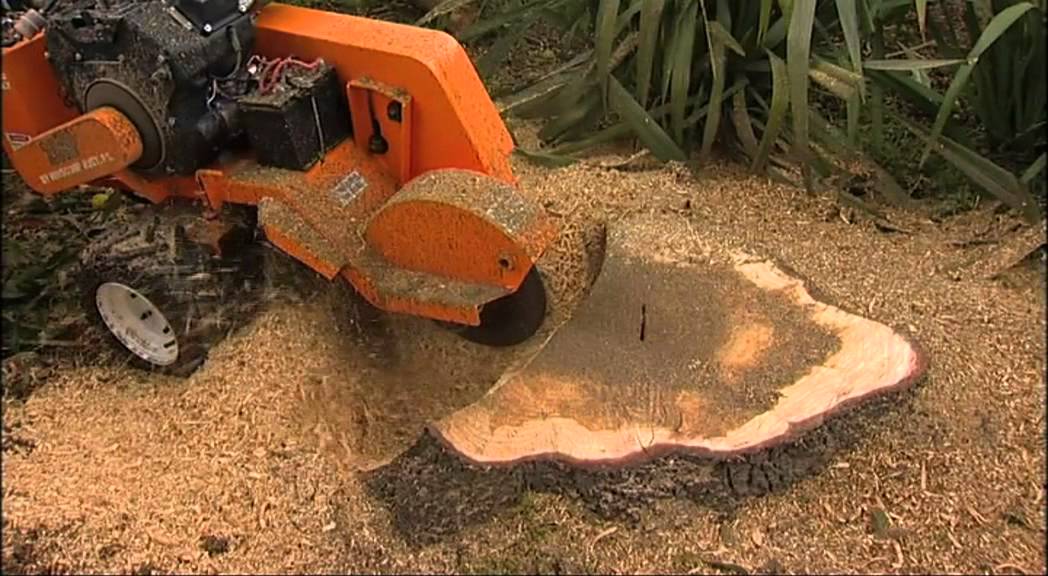
Replanting or Landscaping
Once the hole is filled, you can plant grass, flowers, or even a new tree.
How Long Does Tree Stump Removal Take?
Factors Affecting Removal Time
The size of the stump, the method used, and the condition of the soil all play a role.
